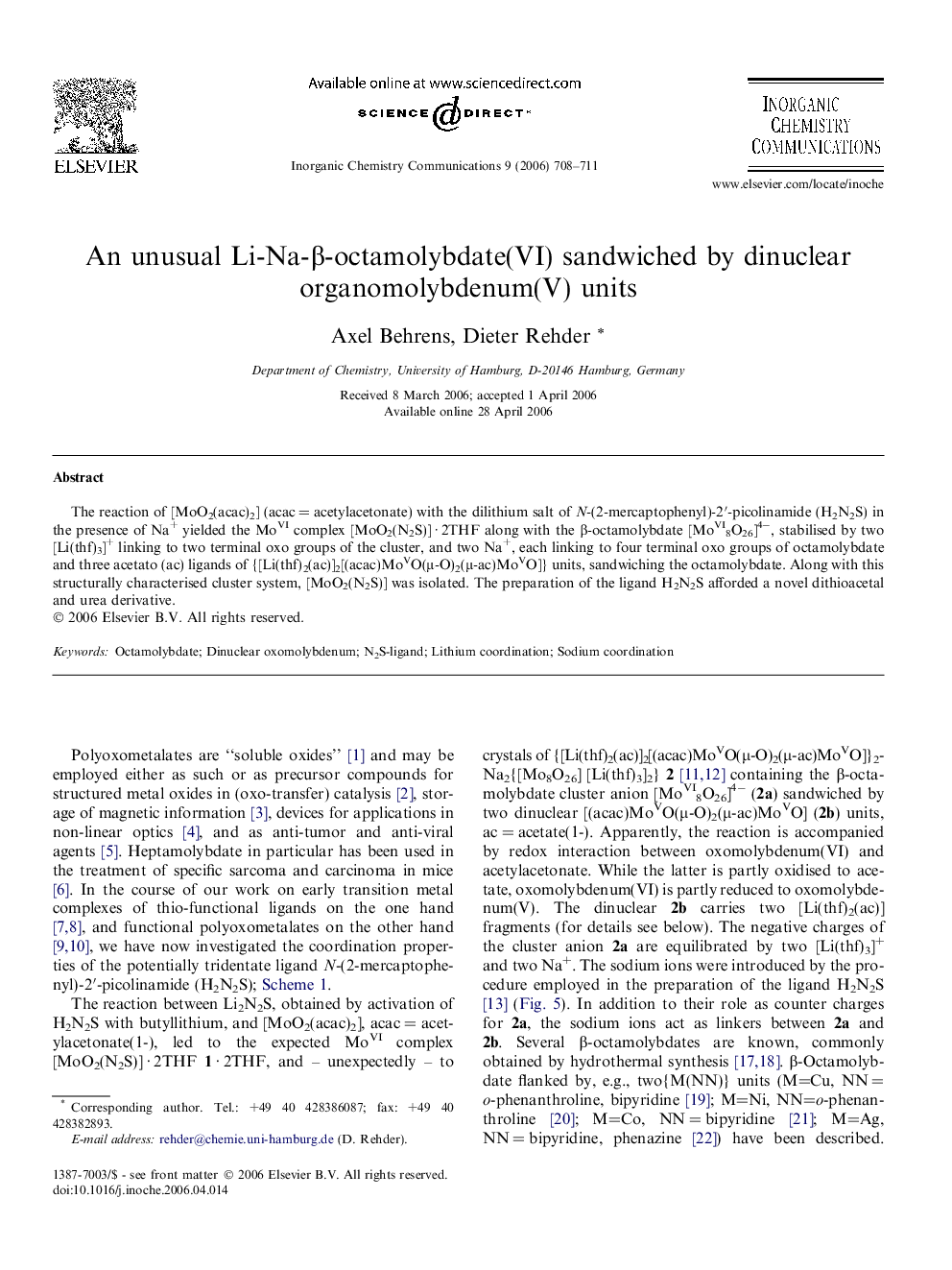| Article ID | Journal | Published Year | Pages | File Type |
|---|---|---|---|---|
| 1303638 | Inorganic Chemistry Communications | 2006 | 4 Pages |
The reaction of [MoO2(acac)2] (acac = acetylacetonate) with the dilithium salt of N-(2-mercaptophenyl)-2′-picolinamide (H2N2S) in the presence of Na+ yielded the MoVI complex [MoO2(N2S)] · 2THF along with the β-octamolybdate [MoVI8O26]4−, stabilised by two [Li(thf)3]+ linking to two terminal oxo groups of the cluster, and two Na+, each linking to four terminal oxo groups of octamolybdate and three acetato (ac) ligands of {[Li(thf)2(ac)]2[(acac)MoVO(μ-O)2(μ-ac)MoVO]} units, sandwiching the octamolybdate. Along with this structurally characterised cluster system, [MoO2(N2S)] was isolated. The preparation of the ligand H2N2S afforded a novel dithioacetal and urea derivative.
Graphical abstractThe reaction of N-2-mercaptophenyl-2′pyridinecarboxamide (H2L) with bis(acetylacetonato)dioxomolybdenum(VI) ([MoO2(acac)2]) yielded, along with [MoO2L], the β-octamolybdate(VI) [Li(thf)3]2Na2[Mo8O26], linked via hepta-coordinated Na+ ions to two dinuclear, oxo- and acetato-bridged oxomolybdenum(V) units of composition {[Li(thf)2(ac)]2[(acac)MoVO(μ-O)2 (μ-ac)MoVO]}, and thus to a novel inorganic–organic hybrid system solely based on molybdenum.Figure optionsDownload full-size imageDownload as PowerPoint slide
